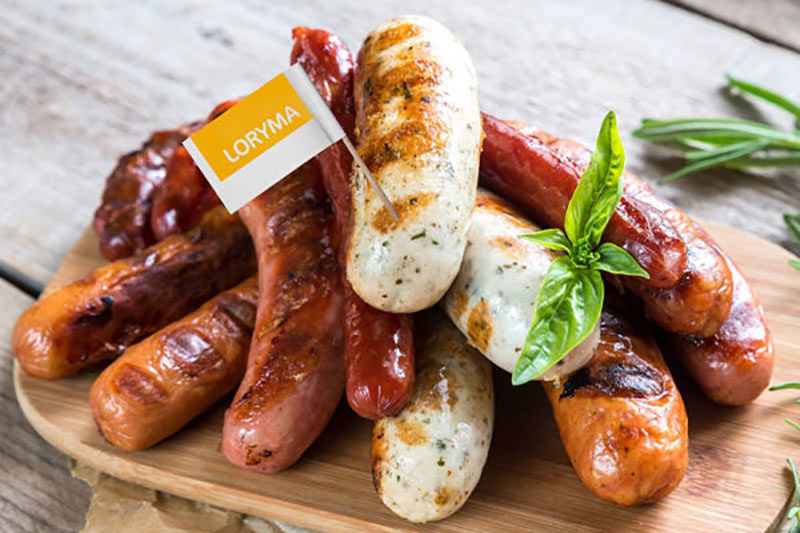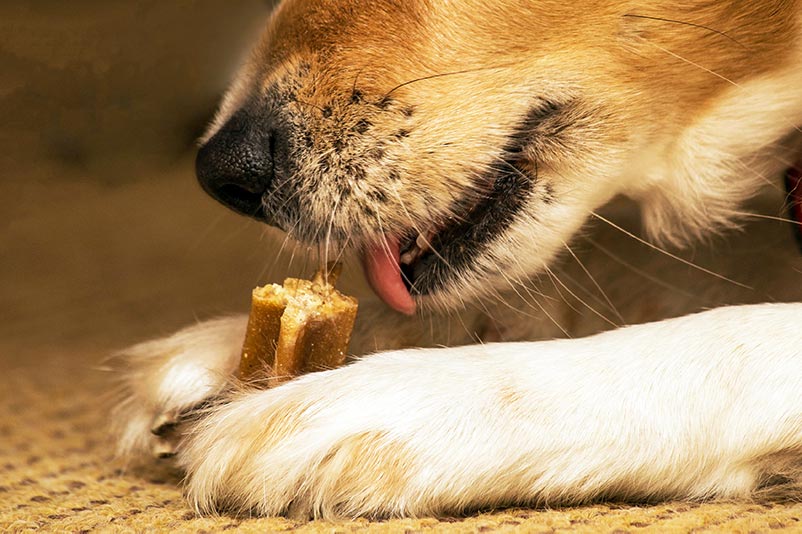The future is made with wheat
We work with wheat in the various Crespel & Deiters Group brands. Its application is versatile and often groundbreaking.

Recycling management: corrugated board example “starch as a raw material for the production of sustainable packaging”
The demand for sustainable packaging solutions made of paper, cardboard and paper board has been growing for years. Corrugated board is often an alternative to plastic. Corrugated board is a natural product that consists predominantly of domestically-sourced, renewable raw materials. To be precise: corrugated board consists about 79% of secondary fibres and about 21% of primary fibres. Thus, used and recycled corrugated board packaging is also the most important raw material for producing raw paper. The necessary primary fibre content is obtained from broken and thinning wood.
However, effective recycling only becomes possible through the usage of starch-based, high performance adhesives. If synthetic adhesives are used instead of starch-based adhesives, then paper and corrugated board is in a form that is no longer recyclable. This has serious ecological effects, and impacts both the separation of recyclable materials and the carbon footprint. In this respect, corrugated cardboard is already an exemplary recycling product today. It can be reused up to 25 times and, as described above, it is 100% recyclable.
On the basis of natural, wheat-based raw material, C&D Corrugating & Paper develops starch-based, high performance adhesives of this kind that are used as functional products and in industry-specific solutions. Using our know-how, we help the international corrugated board and paper industry produce higher quality products in a more efficient and ecological manner.
A trend outlook: Packaging market researchers see enormous potential for plastic reduction. According to their estimations, about 21% of all plastic packaging, in the DACH region for instance, can be replaced with corrugated board (according to VDW).
Read more: C&D Corrugating & Paper

The global population is growing and, with it, the need for food. But how will roughly ten billion people be sustainably fed in 2050? The question is not easy to answer, the answers are complex and multi-layered. There are various approaches that can lead to success together. An important point is the reduction of food waste. Wheat-based starch products can contribute to a longer shelf life of food, thereby counteracting food waste.
Large parts of the world’s population do not have adequate access to nutritious, protein-rich food. By contrast, industrialised and emerging markets are struggling with the health and environmental consequences of over eating animal proteins. The plant protein of wheat is a key for balanced, sustainable nutrition. Textured plant proteins are a valuable contribution to securing a worldwide sustainable diet.
Whether plant-based meat substitution products are sustainable depends primarily on their ingredients and origin. This makes the subject very complex. As soon as the ingredients for their production are imported, their ecological and social impact becomes complicated. A simple principle that applies to food: “The shorter the ingredient list and the shorter the transport path, the better the ecological footprint!”
Wheat is cultivated globally on about 220 million hectares making it the most significant field crop in the world. Wheat provides starch and proteins making it an important source of nutrition. The usage of available plant proteins and the combination thereof ultimately opens a multitude of possibilities that contribute to land and resource conservation, while extensively providing human nutrition.
In order to make the substitution of meat through plant-based alternatives more attractive, the market for textured wheat products is growing. Plant-based foods can be enriched with wheat proteins thereby improving the nutritional value. And wheat proteins provide texture for vegetarian and vegan products.
More about wheat in the foord industry: Loryma
What are textured wheat proteins?
The term “textured” stands for the versatile and innovative process technology of extrusion. The extrusion of proteins is a physical process in which the product is pressed through a defined opening with the application of pressure and temperature, retaining the shape obtained thereby. In the application of this process technology, the range of possibilities of the end-consumer product varies greatly as regards the texture and stability. Extrusion provides the food industry with an important tool for ensuring a nutritional basis and developing alternative sustainable food concepts.
More about textured wheat proteins: ECP

A lot of petrochemical products are still being used in industry. The demand for more environmentally-friendly alternatives to this petrochemical products is constantly growing. Here, the industry’s task is to offer innovative and novel solutions that flexibly respond to consumer needs, while at the same time treating nature and the environment in a resource-conserving manner. Recycling management will play an increasingly important role thereby. This means that in the future, we should produce as many products from recycling materials as possible.
Plant-based starch products provide an important requirement here by being used as a natural binding agent system and natural coating system. However, solutions generally have to be found along the entire value creation chain.
Environmentally-critical ingredients such as mineral oil products can gradually be replaced by renewable, biodegradable starch-based ingredients in numerous technical areas. C&D Technical Applications is continuously working on innovations and expanding its starch products’ range of functions and applications in the technical sector. The objective is to satisfy ever-changing customer and consumer needs in a sustainable and environmentally friendly way and to provide answers to pressing questions with new applications.
Find more information about wheat in technical applications at C&D Technical Applications

A major trend in developed countries is that the number of household pets is increasing significantly. Today, in the majority of cases, pets are fully-integrated members of the family. And people want the best possible nutrition for their animal friends.
As a result, trends from the food industry are transferring over to the market for household pet nutrition. This means that we will also see an increased demand for tasty, nutritionally rich and healthy pet food. Ideally also GMO-free. Wheat protein, textured wheat protein, wheat starches and pregelatinised flours provide the nutritional addition that pet owners want for their furry friends.
Trigea works in the household pet nutrition segment at the Crespel & Deiters Group. Find out more about Trigea

With the inevitable increase of the world’s population, the demand for animal protein to feed people is also increasing.
As a crucial refinement site for animal-based products, Germany also draws on various raw material sources for the nutrition of livestock. However, not every raw material can be, or is permitted to be processed readily. In addition to parameters such as quality, availability and pricing structures, economic, environmental and agricultural politics objectives also always play a crucial role in feed production. Sustainability is increasingly becoming a guiding principle for animal feed. With optimised feed rations a crucial contribution can be made to sustainable animal husbandry, and thereby to protecting the climate as well. The high-quality starch and protein products from domestically-sourced raw materials play an essential role in reducing the feed protein shortage in the EU. In addition, they are free from genetic modification.
Crespeo is the contact partner for the feed industry and agricultural operations within the Crespel & Deiters Group. More information about our services: Crespeo